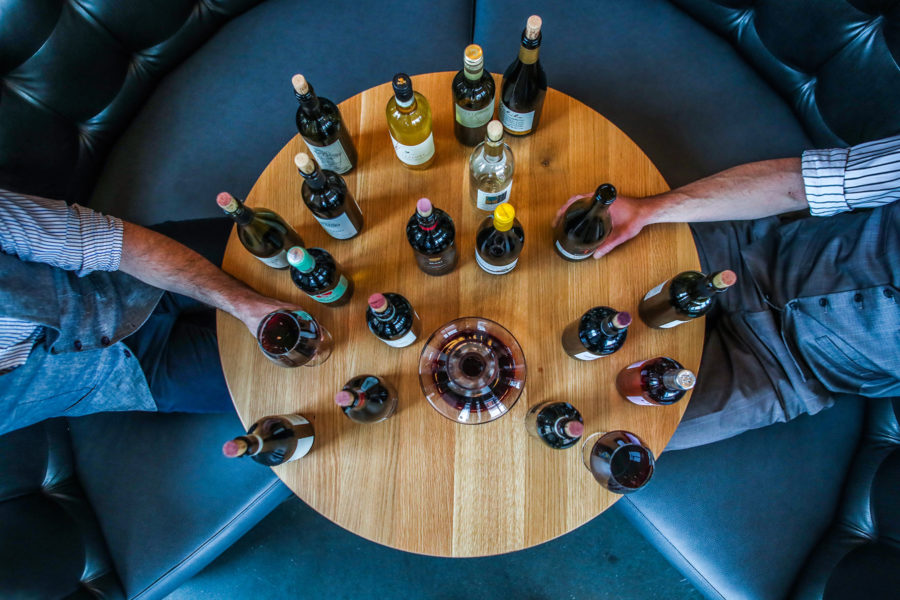
Drink what you enjoy, regardless of the label or price point. It’s a mantra of mine, as many of my readers know. That said, to very sophisticated wine collectors, the labels and price points do become the reason for the purchase, and not necessarily the wine itself. Many of the wealthiest collectors rarely open and drink the world’s best of the best. It’s like art. It’s there to observe, assess, evaluate and soak in. When those extremely rare bottles of 1945 Clos St. Denis from Domaine Ponsot turned up at auctions in the past, those that had the means bid them up madly. As long as they weren’t opened, and simply went from cellar to cellar, they became like a great Matisse—at times very abstract. They are viewed, cellared, discussed and then resold. To the many who can afford the cost, it very much becomes an investment.
On very special occasions, when these beauts are opened, only the most discerning palate can truly know the difference between a bottle that’s as expensive as a Ferrari, and one that’s ten percent of that. (Robert Parker is one of the very few.) After all, taste is so subjective at this level that few can claim to be an expert on how they are truly meant to be. But unlike art, the real value is inside the bottle, and not front-and-center right there on the canvas. So, how would one know if the wine isn’t a fake if it’s rarely or never opened?
The world’s biggest wine counterfeiter, and first to be convicted of wine fraud, is Rudy Kurniawan. Kurniawan hung in billionaire circles, duping them on forged wines that sold at auctions for hundreds of thousands believed to be authentic. (He once sold approximately $24.7 million of wine at one auction in 2006—the largest at the time.) That’s some expensive wines. Interestingly, he eventually was caught, not from someone with a sophisticated palate that could tell the difference, but from getting sloppy. Kurniawan was bottling some pretty good forged stuff, but selling it for many times that, so not surprisingly, that’s not what got him into trouble. Kurniawan went sideways when he produced a magnum of Petrus from 1921 when no magnums were ever available in 1921. The 1945 Clos St. Denis from Domaine Ponsot I mention above? Laurent Ponsot’s family wasn’t in the wine business until 1982.
I don’t know one person that likes to get ripped off, regardless of the price point, nor the size of the wallet. When we view restaurant wine menus, we tend to look at what “values” there are. Some restaurants markup wines more than 300 percent, so we gravitate towards the ones that we know have good value. Obviously, this is somewhat different than not getting what we purchased, but getting ripped off, nonetheless. So, how do we truly know the authenticity of a very high end purchase?
Wineries now have anti-counterfeiting solutions to confirm this. Chateaux Margaux uses three security systems for detection: Secure paint, bubble tag, and laser etching. By doing so, it makes it possible for the wine estate to cross check information. Another technology utilized by Chateau Lator is taking Near Field Communications’ chips (NFC) and embedding them on the backs of labels. These are very hard to detect, and a good way for wine makers to ID the wine’s authenticity.
Yet another method currently being implemented is Radio Frequency Identification or RFID through smartphones. This is a tracking and tracing system that will allow the consumer to know the wine’s history from inception to purchase with a high degree of confidence.
As you see, some wineries, particularly the higher end French wine producers, are now taking steps to ensure confidence that the wine’s value is what it portends to be. It’s somewhat alarming that it needs to be this complicated, however.
We know wine has a tendency to coalesce people, bringing us together for wonderful conversations, great dining experiences, and a genuine-ness that creates lifelong friendships. Yes, there’s a real science and mystery to wine and winemaking, added by its historical references, but we want and need to keep it simple.
My recommendation to not getting ripped off? Know what you’re buying by becoming educated on the winery, vintage and wine before making a higher end purchase. Do your homework and put the time into research before picking that bottle, especially if it’s an older vintage that will be laid down for years to come. By doing so, you can feel confident that what you just purchased is at a value you expect. There’s always a chance that you can get duped, as with Rudy Kurniawan’s very sophisticated clientele, but with today’s technology and some extensive investment in research, the probability of getting tricked will be minimal, and the assurance in value will be high.

